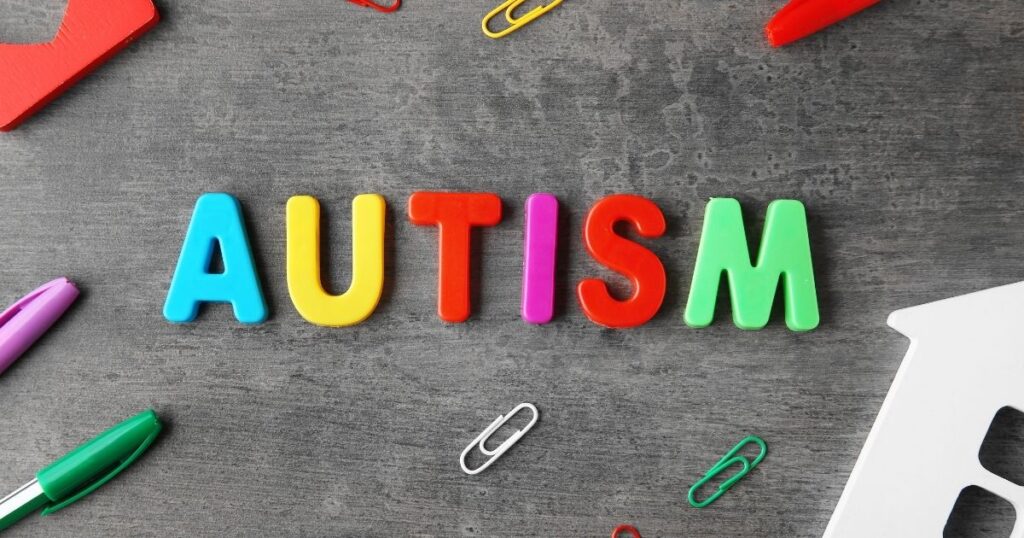Understanding Autism and Applied Behavior Analysis Therapy
Autism is a neurodevelopmental disorder that affects individuals’ ability to communicate, interact socially, and engage in repetitive behaviors. It is estimated that one in every 54 children is diagnosed with autism spectrum disorder (ASD) in the United States alone. As the prevalence of autism continues to rise, so does the need for effective treatment options.

Applied Behavior Analysis (ABA) therapy has emerged as one of the most widely recognized and evidence-based therapies for individuals with autism. ABA therapy focuses on understanding and modifying behavior through systematic and data-driven interventions. By breaking down complex behaviors into smaller, measurable components, ABA therapists can identify the underlying causes of challenging behaviors and develop targeted strategies to promote positive change.
The Benefits of Applied Behavior Analysis Therapy for Autism
The benefits of ABA therapy for individuals with autism are vast and far-reaching. One of the primary goals of ABA therapy is to improve communication skills. Through the use of visual aids, sign language, and other communication strategies, individuals with autism can develop the ability to express their needs and wants more effectively. This, in turn, enhances their overall quality of life and reduces frustration and challenging behaviors.
Another significant benefit of ABA therapy is the improvement of social skills. Individuals with autism often struggle with social interactions and may find it challenging to make and maintain friendships. ABA therapists work on teaching appropriate social behaviors, such as turn-taking, sharing, and making eye contact. By breaking these skills down into manageable steps and providing consistent reinforcement, ABA therapy helps individuals with autism develop the social skills necessary for successful social interactions.
In addition to communication and social skills, ABA therapy also focuses on reducing challenging behaviors and promoting adaptive behaviors. Through the use of positive reinforcement and other behavior modification techniques, ABA therapists can help individuals with autism replace problem behaviors with more appropriate alternatives. This not only improves the individual’s functioning but also enhances their independence and ability to navigate their environment successfully.
Success Stories: Real-Life Examples of Applied Behavior Analysis Therapy
The power of ABA therapy can be seen in numerous success stories of individuals with autism who have made significant progress through this therapeutic approach. Take the case of Sarah, a 6-year-old girl diagnosed with autism at the age of 3. When Sarah first started ABA therapy, she had limited communication skills and engaged in frequent tantrums. With the consistent and structured interventions provided by her ABA therapist, Sarah gradually developed the ability to communicate her needs using a combination of words and gestures. Her tantrums decreased in frequency and intensity, allowing her to participate more fully in family activities and social interactions.
Another success story is Alex, a teenager with autism who struggled with self-care skills and independence. Through ABA therapy, Alex learned how to perform daily tasks such as brushing his teeth, getting dressed, and preparing meals independently. This newfound independence not only boosted Alex’s self-esteem but also opened up new opportunities for him to engage in age-appropriate activities and build meaningful relationships with peers.
These success stories highlight the transformative impact of ABA therapy on individuals with autism. By providing personalized interventions and support, ABA therapists unlock the potential of individuals with autism and empower them to achieve their goals.
The Science Behind Applied Behavior Analysis Therapy
At its core, ABA therapy is founded on the principles of behaviorism and learning theory. Behaviorists believe that behavior is learned and can be modified through reinforcement and other behavior modification techniques. ABA therapists apply these principles to identify the antecedents and consequences that influence behavior and develop interventions to promote positive change.
One of the key components of ABA therapy is the use of data collection and analysis. ABA therapists collect data on the individual’s behavior and analyze it to identify patterns, trends, and areas of improvement. This data-driven approach allows ABA therapists to make informed decisions about which interventions are most effective and to track progress over time.
The effectiveness of ABA therapy for individuals with autism is supported by a substantial body of research. Numerous studies have demonstrated the positive outcomes of ABA therapy in improving communication skills, reducing challenging behaviors, and promoting adaptive behaviors. The scientific evidence behind ABA therapy provides a solid foundation for its widespread use as a treatment approach for autism.
The Role of Applied Behavior Analysis Therapists in Autism Treatment
ABA therapists play a crucial role in the treatment of autism. They are highly trained professionals who specialize in the application of ABA principles and techniques. ABA therapists work closely with individuals with autism, their families, and other members of the treatment team to develop and implement individualized intervention plans.
The first step in the ABA therapy process is conducting a comprehensive assessment of the individual’s strengths, challenges, and goals. Based on this assessment, the ABA therapist develops an individualized treatment plan that targets specific behaviors and skills to be addressed. The treatment plan includes specific goals, strategies, and techniques tailored to the individual’s unique needs and preferences.
Once the treatment plan is in place, the ABA therapist works directly with the individual to implement the interventions and collect data on their progress. ABA therapists use a variety of techniques, such as discrete trial teaching, naturalistic teaching, and incidental teaching, to promote skill acquisition and behavior change. They also provide ongoing support and guidance to the individual’s family, helping them understand and implement the strategies and techniques in their everyday lives.
Developing an Individualized Applied Behavior Analysis Therapy Plan
The development of an individualized ABA therapy plan is a collaborative process involving the ABA therapist, the individual with autism, and their family. The first step in developing the treatment plan is conducting a thorough assessment of the individual’s strengths, challenges, and goals. This assessment may involve interviews, direct observations, and formal assessments to gather information about the individual’s behavior, communication skills, social skills, and adaptive functioning.
Based on the assessment findings, the ABA therapist identifies specific behaviors and skills to target in the treatment plan. These goals should be measurable, observable, and achievable within a reasonable timeframe. The ABA therapist also considers the individual’s preferences and motivators when selecting goals and interventions to ensure they are meaningful and engaging for the individual.
Once the goals are established, the ABA therapist develops a detailed intervention plan outlining the strategies and techniques to be used. This plan includes a description of the target behavior, the antecedents and consequences that influence the behavior, and the specific steps to be taken to promote behavior change. The intervention plan should be flexible and adaptable to the individual’s changing needs and progress.
Strategies and Techniques Used in Applied Behavior Analysis Therapy
ABA therapy utilizes a wide range of strategies and techniques to promote behavior change and skill acquisition. One commonly used technique is discrete trial teaching (DTT), which involves breaking down complex skills into smaller, more manageable steps. The individual is presented with a specific instruction or question, and their response is reinforced with praise, tokens, or other rewards. DTT is particularly effective in teaching new skills and promoting generalization across different settings and contexts.
Another technique used in ABA therapy is naturalistic teaching, which takes advantage of naturally occurring opportunities for learning and skill development. Naturalistic teaching involves embedding teaching moments into the individual’s everyday activities and routines. For example, during mealtime, the ABA therapist may use prompting and reinforcement to teach the individual how to request specific food items or use appropriate table manners.
Incidental teaching is another strategy commonly used in ABA therapy. This technique involves capitalizing on the individual’s interests and motivation to promote learning. The ABA therapist sets up situations where the individual is likely to engage in the target behavior and provides prompts and reinforcement to promote its occurrence. For example, if the individual is motivated by a particular toy, the ABA therapist may use that toy as a reward for engaging in a specific behavior.
Overcoming Challenges in Applied Behavior Analysis Therapy
While ABA therapy has proven to be highly effective in promoting positive behavior change and skill acquisition, it is not without its challenges. One of the primary challenges in ABA therapy is the need for consistency and generalization of skills across different settings and contexts. Skills learned in the therapy room may not automatically transfer to the individual’s home, school, or community environments. ABA therapists work closely with the individual’s family, teachers, and other caregivers to develop strategies for promoting generalization and maintaining consistency in the individual’s daily life.
Another challenge in ABA therapy is the occurrence of challenging behaviors. Individuals with autism may engage in behaviors such as aggression, self-injury, or property destruction, which can be disruptive and harmful to themselves and others. ABA therapists use functional behavior assessments to identify the underlying causes of these behaviors and develop targeted interventions to address them. The goal is to teach the individual more appropriate ways to express their needs and wants and reduce reliance on problem behaviors.
Finding Applied Behavior Analysis Therapy Services
If you are considering ABA therapy for yourself or a loved one with autism, it is essential to find a qualified and experienced ABA therapist or provider. Start by consulting with your child’s pediatrician or seeking recommendations from other parents or professionals in the autism community. It is also helpful to research and inquire about the credentials and experience of potential ABA therapists or providers.
When selecting an ABA therapy provider, consider factors such as the provider’s expertise in working with individuals with autism, their approach to treatment, and the availability of comprehensive assessment and ongoing support services. It is also important to inquire about the provider’s insurance coverage and billing practices to ensure that ABA therapy services are accessible and affordable.
Conclusion
In conclusion, ABA therapy is a powerful and evidence-based approach to treating autism. Through systematic and data-driven interventions, ABA therapists help individuals with autism unlock their potential and promote progress in communication, social skills, and adaptive behaviors. By understanding the science behind ABA therapy and collaborating with qualified professionals, individuals with autism and their families can embark on a journey of growth and development.
If you or a loved one with autism could benefit from ABA therapy, don’t hesitate to reach out to a qualified ABA therapist or provider today here: https://hildastatz.com/. Together, you can unlock the potential and promote progress in the journey towards a brighter future.


